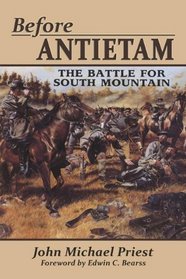Search -
Before Antietam: The Battle for South Mountain
Before Antietam The Battle for South Mountain
Author:
Civil War buffs and scholars quickly recognize the dates of September 16-18, 1862 as the period marking the bloodiest battle of the entire campaign--Antietam. But until now, the ten days prior to that event have remained in relative obscurity. In Before Antietem, John Michael Priest offers the first book-length, tactical exploration of the Maryl... more »
Author:
Civil War buffs and scholars quickly recognize the dates of September 16-18, 1862 as the period marking the bloodiest battle of the entire campaign--Antietam. But until now, the ten days prior to that event have remained in relative obscurity. In Before Antietem, John Michael Priest offers the first book-length, tactical exploration of the Maryl... more »
ISBN-13: 9781572494077
ISBN-10: 1572494077
Publication Date: 8/8/2011
Pages: 433
Rating: ?
ISBN-10: 1572494077
Publication Date: 8/8/2011
Pages: 433
Rating: ?
0 stars, based on 0 rating
Publisher: White Mane Publishing Company
Book Type: Paperback
Other Versions: Hardcover
Members Wishing: 1
Reviews: Amazon | Write a Review
Book Type: Paperback
Other Versions: Hardcover
Members Wishing: 1
Reviews: Amazon | Write a Review
Genres:




